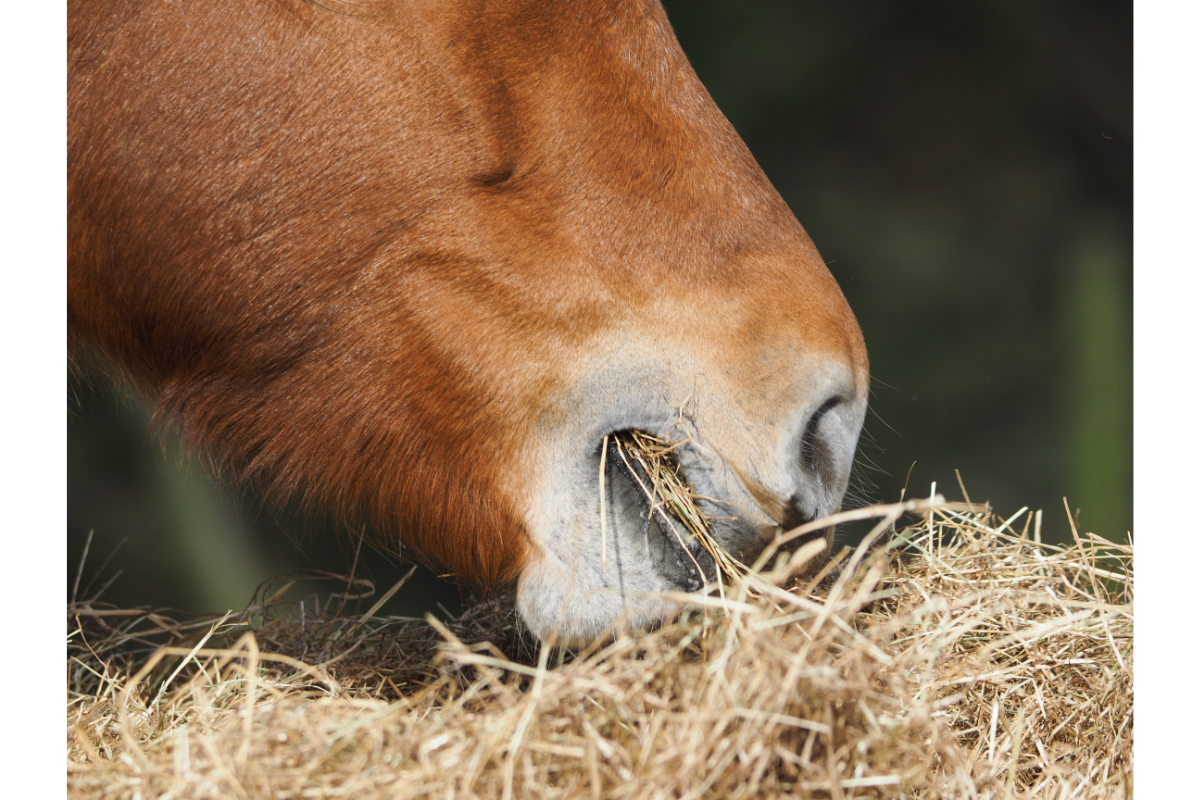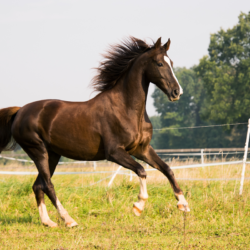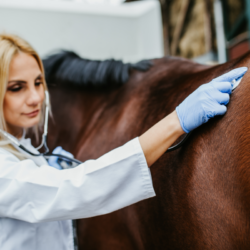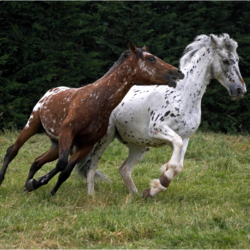Gastric ulcers are a common condition in horses, having a significant impact on their health and performance. Find out more about the causes, symptoms, diagnosis, treatment and prevention of this condition.
What is an ulcer?
Gastric ulcers are a common condition in adult horses. This condition, also known as equine gastric ulcer syndrome, comprises two types of ulcer depending on the part of the stomach affected: squamous mucosa and glandular mucosa.
The squamous mucosa does not produce hydrochloric acid, bicarbonates or mucus. Normally, the pH is higher here than in the rest of the stomach. However, increased acidity or prolonged exposure to an acidic environment can lead to ulcers in this area, which is relatively vulnerable to pH fluctuations. Racehorses are particularly at risk, with a prevalence of up to 90% according to some studies.
The glandular mucosa continuously secretes hydrochloric acid, maintaining a very low pH (between 1 and 2). It is protected by a physical barrier (keratinised cells) and chemical barriers (mucus and bicarbonates). Ulcers in this area are often the result of an imbalance between the acidity and the protective mechanisms. These ulcers are mainly located near the pyloric antrum, with a prevalence varying between 8% and 65% depending on the study.
The economic importance of this disease is considerable, particularly in the sporting and racing sectors, due to poor sporting performance and treatment costs.
What are the symptoms of gastric ulcers?
The clinical signs of gastric ulcers in horses are varied and often non-specific, making diagnosis based on symptoms alone difficult. However, certain signs may indicate the presence of the condition.
Horses suffering from ulcers are often in poor general condition, with a dull coat, muscle wasting and chronic emaciation. Decreased appetite is also common, especially towards concentrates. Recurrent colic, particularly after meals, is a frequent warning sign.
Ulcers can lead to behavioural changes such as nervousness, aggression, reluctance to work and increased sensitivity in the flanks. Horses may also display stereotypies such as the leaning tic or the air tic.
Other signs include teeth grinding, frequent yawning during meals,hypersalivation and poor general condition. Sporting performance may decline, and horses may become intolerant of exertion, showing fatigue and reduced stride amplitude. These symptoms can affect both adults and foals, with the latter developing serious complications.
How is the condition diagnosed?
The diagnosis of gastric ulcers is based on additional tests, as clinical signs are often insufficient. Gastroscopy is the method of choice for confirming the presence of ulcers and assessing their severity.
Gastroscopy involves inserting an endoscope through the nostrils, passing through the oesophagus to the stomach, to visualise the gastric mucosa. This procedure requires light sedation and a prior diet of 12 hours without food and 8 hours without water. The gastroscopy enables us to determine which parts of the stomach are affected and adapt the treatment accordingly.
This examination is painless and provides a clear view of the inside of the stomach, making it possible to confirm or rule out other conditions such as gastric impaction, tumours or pyloric stenosis. Response to treatment can also provide indirect evidence of the presence of ulcers, but gastroscopy remains the only reliable means of diagnosis.
What treatments are available?
Treatment of gastric ulcers in horses varies according to the area affected (squamous or glandular mucosa) and the severity of the lesions.
Omeprazole is the drug of choice for treating ulcers of the squamous mucosa. This drug reduces the production of hydrochloric acid, creating an environment conducive to healing. It should be taken orally once a day for an average of 28 days. To maximise its effectiveness,omeprazole should be given in the morning before the first meal. Feed should be given 60 to 90 minutes later.
For glandular ulcers, omeprazole alone is less effective. A combination of omeprazole and sucralfate is often recommended. Sucralfate lines the mucosa, stimulates mucus secretion and promotes cell repair. Misoprostol, another treatment, increases blood flow to the stomach and stimulates the secretion of mucus and bicarbonates.
Careful monitoring of clinical signs and follow-up gastroscopies are essential to adapt the treatment and ensure complete healing.
What are the means of prevention?
Preventing gastric ulcers in horses involves limiting risk factors and adopting appropriate management practices. A diet rich in forage and low in starch is crucial. Horses should have access to hay ad libitum or at least 1.5-2% of their live weight in forage. Concentrate meals should be limited and fed after forage to reduce gastric acidity. Increasing fibre intake in the ration helps to maintain a higher gastric pH. This appears to reduce the risk of ulcers.
Encouraging outings to pasture and limiting stress are essential. Horses need to be able to interact with other horses to reduce stress.Training should be regular but not intensive, with adequate rest periods. Limiting intense, prolonged exercise helps reduce pressure on the stomach and the risk of ulcers.
In high-risk horses, low-dose omeprazole may be beneficial. Feed supplements containing pectin-lecithin complexes, aloe vera or zinc can also help prevent ulcers.
Using slow-feeders can extend the time it takes to consume forage. This reduces fasting periods and helps maintain continuous saliva production, which buffers gastric acidity.
Ekygard from Audevard Laboratories is recommended to protect the gastric mucosa and reduce acidity. Ekygard contains ingredients recommended by the European Group of Specialists in Equine Internal Medicine. These include pectin-lecithin complexes, zinc and aloe vera. These help to form a protective gel in the stomach.
Finally, regular worming and control of gastric parasites are important to prevent ulcers caused by parasitic infestations.





